#song moo kwan
Explore tagged Tumblr posts
Text
Especial KRP — Sobrenomes Coreanos
Cansado de Lee? Kim? Seo? Song? Choi? Hwang? Park? Abaixo do "Read More" você vai encontrar alguns sobrenomes mais incomuns que pode usar em seus personagens coreanos.

Ah, A (아 - A)
Ae (애 - É)
Ban, Bahn, Van, Vahn, Pan, Pahn (반 - Ban)
Beon, Bun, Buhn, Veon, Vun, Vuhn (번 - Bón)
Beom, Bum, Buhm, Veom, Vum, Vuhm (범 - Bóm)
Bo, Vo (보 - Bô)
Bok, Vok (복 - Bôc)
Bong, Vong (봉 - Bông)
Boo, Bu, Voo, Vu (부 - Bú)
Bi, Vi, Bee, Vee (비 - Bi)
Bin, Been, Bean, Vin, Veen, Vean (빈 - Bin)
Bing, Beeng, Ving, Veeng (빙 - Bing)
Da (다 - Dá)
Dam (담 - Dam)
Dan (단 - Dan)
Dang (당 - Dang)
Dae, Dai (대 - Dé)
Dok, Dock (독 - Dôc)
Dokgo, Dokko (독고 - Docô)
Don (돈 - Dôn)
Dong (동 - Dông)
Dongbang (동방 - Dôngbâng)
Deung (등 - Dûng)
Deungjeong, Deungjung (등정 - Dûngdjóng)
Eogeum, Uhgeum, Ugeum (어금 - Ógûm)
Eun (은 - Ûn)
Eum (음 - Ûm)
Hak, Hahk (학 - Rác)
Hae (해 - Ré)
Hyeong, Hyung, Hyoung (형 - Rióng)
Ho, Hoh (호 - Rô)
Hwa, Hwah (화 - Ruá)
Hwangmok (황목 - Ruangmôk)
Hwangbo (황보 - Ruangbô)
Hoo, Hu (후 - Ru)
Ja, Jah (자 - Já)
Jeom, Jum (점 - Djóm)
Je, Jeh (제 - Djê)
Jegal, Jekal (제갈 - Djegál)
Jeo, Juh (저 - Djó)
Jong (종 - Djông)
Jwa, Joa, Jua (좌 - Djuá)
Jeung (증 - Jûng)
Kangjeon, Kangjun, Gangjeon, Gangjun (강전 - Gangdjón)
Ka, Ga (가 - Ga)
Kal, Gal (갈 - Gal)
Kam, Gam (감)
Kan, Gan (간 - Gan)
Kae, Gae (개 - Gué)
Kyun, Kyeon, Kyoun, Gyun, Gyeon, Gyoun (견 - Guión)
Kyung, Kyeong, Kyoung, Gyung, Gyeong, Gyoung (경 - Guióng)
Kye, Gye (계 - Guiê)
Kok, Gok (곡 - Gôc)
Kwan, Gwan (관 - Guân)
Kwok, Gwok (궉 - Guóc)
Kyo, Gyo (교 - Guiô)
Kuk, Guk, Kook, Gook, Kuck, Guck (국 - Guc)
Kung, Koong, Gung, Goong (궁 - Gung)
Kwok, Gwok, Kweok, Gweok (궉 - Guóc)
Keun, Geun (근 - Gûn)
Keum, Geum (금 - Gûm)
Ki, Gi, Kee, Gee (기 - Gui)
Kil, Gil (길 - Guil)
Lin, In, Rin, Leen, Een, Reen (인 - In)
Man, Mahn (만 - Man)
Mangjeol, Mangjul (망절 - Mangdjól)
Mae (매 - Mé)
Maeng (맹 - Méng)
Myung, Myeong, Myoung (명 - Mióng)
Mo, Moh (모 - Mô)
Mok, Mock (목 - Môc)
Myo (묘 - Miô)
Moo, Mu (무 - Mu)
Mubon, Moobon (무본 - Mubôn)
Muk, Muck, Mook, Moock (묵 - Muc)
Mi, Mee (미 - Mi)
Nan (난 - Nan)
Namgoong, Namgung, Namkoong, Namkung (남궁 - Namgung)
Nang (낭 - Nang)
Nae (내 - Né)
Noi, Nwe (뇌 - Nê)
Ok, Ock (옥 - Ôc)
On, Ohn (온 - Ôn)
Ong (옹 - Ông)
Pan, Pahn (판 - Pan)
Paeng (팽 - Péng)
Pyeon, Pyun, Pyuhn (편 - Pión)
Pyeong, Pyung, Pyuhng (평 - Pióng)
Po, Poh (포 - Pô)
Pyo (표 - Piô)
Pung, Poong (풍 - Pung)
Pi, Pee (피 - Pi)
Pil, Fil, Peel, Feel (필 - Pil)
Ra, La, Rah, Lah (라 - Lá)
Ran, Lan (란 - Lan)
Rang, Lang (랑 - Lang)
Ryeo, Ryuh, Lyeo, Lyuh (려 - Lió)
Roe, Loe, Roi, Loi, Rwe, Lwe (뢰 - Lê)
Sa, Sah (사 - Sá)
Sakong, Sagong (사공 - Sagông)
San, Sahn (산 - San)
Sam, Sahm (삼 - Sam)
Sang, Sahng (상 - Sang)
Seomun, Seomoon, Suhmun, Suhmoon, Sumun, Sumoon (서문 - Sómún)
Seonu, Seonwu, Seonwoo, Seonoo, Sunu, Sunwu, Sunwoo, Sunoo (선우 - Sónú)
Seob, Sub, Seop, Sup, Suhb, Suhp (섭 - Sób)
Sobong (소봉 - Sobông)
Soo, Su (수 - Su)
Sun, Soon (순 - Sun)
Seung (승 - Sûng)
Si, Shi, Xi, See, Shee, Xee (시 - Xi)
Tak, Tahk (탁 - Tác)
Tan, Tahn (탄 - Tan)
Tang, Tahng (탕 - Táng)
Tae (태 - Té)
Uh, Eo, Eoh (어 - Ó)
Wan, Wahn (완 - Uán)
Wang, Wahng (왕 - Uáng)
Wun, Un, Woon, Oon (운 - Un)
Wi (위 - Uí)
Ya, Yah (야 - Iá)
Yeop, Yeob, Yup, Yub, Yuhp, Yuhb (엽 - Iób)
Yeong, Young, Yung (영 - Ióng)
Ye, Yeh (예 - Iê)
Yo (요 - Iô)
Yong (용 - Iông)
Yook, Yuk (육 - Iúk)
35 notes
·
View notes
Text
Song Moo Kwan Pan Song Ryu classes moved!
Song Moo Kwan Pan Song Ryu (Korean Karate) classes have moved to the Fridley Community Center beginning Tuesday July 11th, 2023! Class schedule will remain the same! Tuesday and Thursday at 6:00pm Class will be held in the Community Center gym.

View On WordPress
0 notes
Text
below the cut you will find 140 korean surnames!! all of these names are taken from kdramas and a list of surnames i have found on internet!! please like or reblog if you find this helpful!!

Ahn
An
Bae
Bak
Baek
Bang
Byun
Cha
Chai
Chang
Chay
Cheon
Cheong
Chwe
Chi
Chin
Cho
Choi
Chong
Chu
Chun
Dae
Dan
Dang
Do
Don
Dong
Gae
Gang
Gim
Go
Goe
Ha
Hahm
Han
Ham
Heo
Ho
Hong
Hwang
Hyun
Im
In
Jang
Jee
Jeong
Ji
Jin
Jo
Joh
Ju
Jue
Jun
Jung
Kal
Kang
Keng
Ki
Kil
Kim
Ko
Kong
Ku
Kuk
Kwack
Kwak
Kwan
Kwock
Kwon
Lee
Lin
Ma
Min
Mok
Mong
Moo
Moon
Mun
Myung
Na
Nahm
Nam
No
Noh
Oh
Ok
Ong
Pae
Paek
Pai
Pak
Pan
Park
Pyo
Pyun
Pu
Quon
Ra
Reeh
Ri
Rim
Roh
Ryu
Sa
Sang
Seo
Seol
Shin
Shim
Sim
Sin
So
Son
Song
Suh
Suk
Sun
Sung
Tae
Tak
Tan
Tang
To
Toh
Uhm
Wang
Whang
Won
Woo
Yang
Ye
Yee
Yeo
Yeon
Yoo
Yook
Yoon
You
Yu
Yun
#masterlists.#korean surnames#korean names#name masterlist#name help#rph#krph#name help.#asiarph#exodusresources.
363 notes
·
View notes
Text
Thanks for tagging me!! @hymarners
nickname: Mish or Meeshie
zodiac: Libra sun, Gemini Moon, Sagittarius rising
height: 157 cm
hogwarts house: I actually don’t know because I couldn’t get into Harry Potter.
last thing i googled: Frizzle chickens
song stuck in my head: 12 days of Christmas.
number of followers: 467
amount of sleep: on average 7 and a half hours
lucky number: 8
dream job: This sounds so weird but dog researcher. Like doing research on dog’s emotions and stuff.
wearing: black leggings and a grey hoodie
favorite authors: Cassandra Clare and Kevin Kwan.
favorite instrument: I can’t play any instruments other than the recorder.
aesthetic: wool wrap coat, cute booties, iced coffee, plaid flannel, light snow, baked goods.
favorite song: “love story” by TSwift
favorite animal noise: I love the little whine dogs do when they are super excited to see you. I also like cow moos so much.
random: I can’t ride bikes.
Tagging: @jordaneberle, @berrybreadd, @tychnoblade, @jamiedrysdales, @hoeforaho, @ranbooed , @tysjostys and anyone else who wants to do this! (peeps tagged don’t have to do it if you don’t want to either)
6 notes
·
View notes
Text
IN-DEPTH: How The God of High School Revealed the True, Weird History of Taekwondo
If, like me, you found yourself yearning for some physical activity and breaks from the tedium of schoolwork as a kid, you might have found yourself wanting to learn some martial arts. Watching action stars like Jackie Chan and Bruce Lee, as well as anime, playing fighting games and more, left me with an interest in learning a martial art myself. I found myself at the door of a local Taekwondo school and was instantly hooked. Sadly, like many things, time and obligations got in the way and I had to give up my pursuit of martial arts, but I always found the subject interesting. When I started reading The God of High School, I was instantly hooked by the idea that Jin Mori used Taekwondo, but suddenly, I found myself questioning things: What did they mean, that there were multiple types of Taekwondo? Wasn’t all Taekwondo the same? What was “Renewal Taekwondo” and was it a real thing? The answer to that question is... sort of. Also: There are some light spoilers here! Be warned!
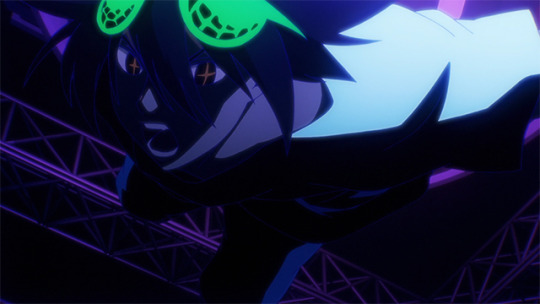
In The God of High School, the revelation that Jin practices “Renewal Taekwondo” serves as a shock to the cast, particularly the Judges and Park Mujin, as it reveals the fact that Jin’s grandfather, Jin Taejin, was not only still alive, but that he had passed on the incredibly powerful skills of Renewal Taekwondo to someone else. At this point in the anime, the reveal has played out far differently, although there’s no telling whether this might change as the anime progresses. We do know that Jin uses Renewal Taekwondo, but we don’t get the same backstory and discussion revolving around Jin’s grandfather, and the past regarding Taekwondo itself. In the WEBTOON series, Park Mujin reveals that “Renewal Taekwondo” was created by South Korean leaders following a defeat at the hands of North Korean “ITF” Taekwondo. And, suddenly, my childhood came back to me: I had learned “WT” Taekwondo, so what was “ITF?” Was it just something the web comic made up, like “Renewal Taekwondo?” As it turns out, this particular rabbit hole went a whole lot deeper, and weirder, than I ever imagined.
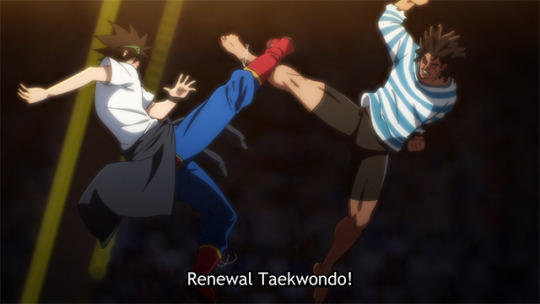
Perhaps the first, and most shocking, fact regarding Taekwondo is that it is less than 100 years old. Many historians agree there is some fluidity to a solid date, but as 4th Dan David Lo notes, Taekwondo likely began formally in 1955, when General Choi Hong-Hi named it after developing the first basic forms of the martial art. While many other popular martial arts, such as Karate, Tai Chi, or Kung-Fu often discuss their proud, long lineages, Taekwondo is often mistakenly assumed to be ancient; in fact, it is only perhaps somewhat related to Taekkyeon, which was nearly wiped out during Japanese occupation. After World War II, the Japanese occupation of Korea came to an end. During the occupation, Japan was particularly cruel to Koreans, suppressing their language, culture, and identity — extending this treatment to martial arts practitioners were forced to quit or go into hiding while Japanese Karate was taught instead. Taekwondo would come from the confluence of various martial arts, having more in common with Karate, mostly due to the violent banning of Korean culture.
Combining their knowledge with new techniques in Shotokan karate, Kung-Fu, and others, would begin to create schools, or “Kwans,” which would give rise to what we today recognize as Taekwondo. Scott Shaw, one of the eminent English authors and students of Taekwondo, explains the genealogy of the first 5, and subsequent 4, Kwans; these Kwans were fairly diverse, with nine divergent approaches and teachers developing their own takes on martial arts. In many cases, historians consider Song Moo Kwan the Kwan most responsible for eventual Taekwondo, with Byung Jik Ro called by some as the “father” of “modern” Taekwondo (more on that later) the original five Kwans — Song Moo Kwan, Chung Do Kwan, Moo Duk Kwan, Ji Do Kwan, and Chang Moo Kwan — were the birthplace of Taekwondo, but it would take another war, and social and cultural upheaval for Taekwondo to really emerge.
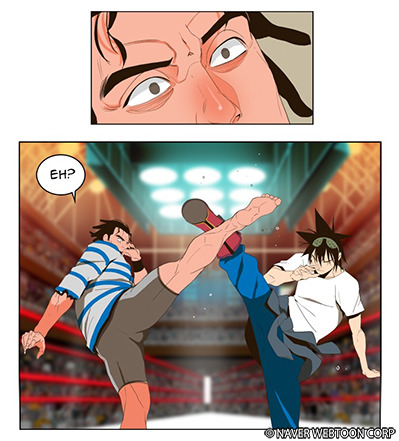
Song Moo Kwan and Chung Do Kwan were founded in 1944, with the other 5 founding Kwans appearing in the following 2 years. If we start Taekwondo’s timeline there, that means Taekwondo is only 76 years old (meaning there’s a good chance your grandparents might actually be older than Taekwondo!), but the “real” birth of Taekwondo would come a fair bit after these Kwans were founded. For that to happen, Korea would be forced into another protracted battle that would decide the course of its modern fate, and the dispersal of Taekwondo to the rest of the world: The Korean War.
Separating the country along the 38th parallel into what are today known as North Korea and South Korea, this civil war shaped Korea’s modern history in cataclysmic ways, separating family members, friends, and cultural identity. Like many aspects of Korean life, Taekwondo found itself straddling an uncomfortable and unclear line: The original Kwans were spread out across the Korean peninsula, with Song Moo Kwan being in what would now be North Korea. Following the Korean war, this would lead perhaps the most controversial figure in Taekwondo history to emerge: General Choi Hong Hi, the true “father” of Taekwondo.
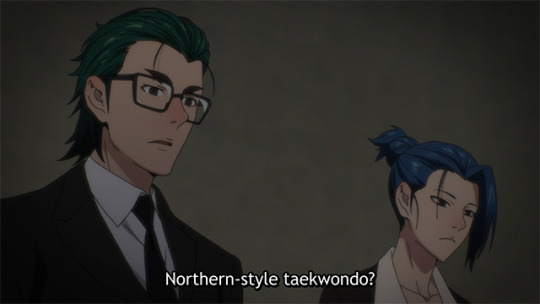
Alex Gillis' A Killing Art reveals the life, warts and all, of General Choi. Born in 1918 in Hwa Dae (located in now North Korea), General Choi Hong Hi was sent to Japan by his father to study, ending up in the tutelage of Han Il Dong, a master of Taekkyeon, one of Korea’s oldest martial arts. Forced into military service by the Japanese, Choi would eventually find himself continuing to serve in the Korean military following the end of World War II and Japanese occupation, earning the title of major general in 1954 (and thus earning him both his title and nickname, “The general”).
Choi’s mastery of Taekkyeon and Shotokan karate led him to develop what he titled “Taekwon-Do,” or “foot, fist, art.” Choi is, as far as historians can tell, the first person to use the word “Taekwondo,” and rightfully seems to deserve the title. The controversy, however, comes from the disagreements between Choi (who, some authors note, was somewhat disagreeable and even deceptive) and other Kwan leaders and Taekwondo practitioners. This would lead to the eventual creation, and split, of Taekwondo into ITF and WT schools, among many other offshoots.
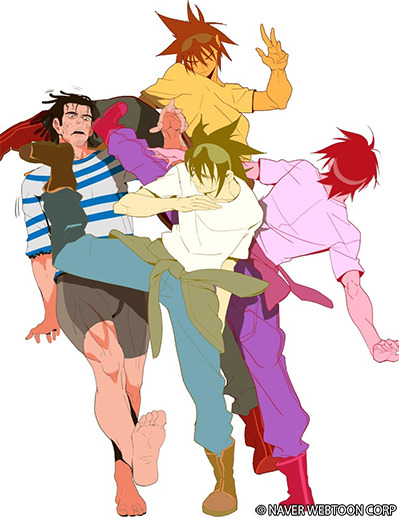
Whether Choi was or wasn’t a deceptive and deceitful person seems to be based on who you ask, and the most common perception of him was that he was complicated (as are we all). What authors and historians such as Lo, Gillis, Shaw, and others agree on is that without General Choi, there would be no Taekwondo, and the subsequent power struggle nearly destroyed, as Lo calls it, the “family” of Taekwondo. While it is perhaps more palatable to consider martial arts as monastic and scholarly, the reality is that they are practiced, created, and influenced by people, and Taekwondo’s somewhat ugly and public schism is a great reminder of this. Choi originally founded the ITF, or International Taekwon-Do Federation, in 1966; however, Choi’s attempts to control all aspects of Taekwon-Do, and the South Korean government’s insistence on “owning” Taekwondo, would create the split that saw Choi flee from Korea to Canada and South Korea creating the KTA (Korean Taekwondo Association), which would eventually give way to the World Taekwondo Federation (WTF, now known as WT), under the governing body of the Kukkiwon.
In the ITF version of this story, Choi simply decided to go “on tour” in 1959, before eventually creating the ITF in 1966. The WT version of the story is just as revisionist, claiming that Taekwondo has roots that supposedly go back 2000 years and that the WT was created in 1973 as the first governing body of Taekwondo. No mention of Choi or the ITF exists in the WT version of Taekwondo. Udo Moening, author of numerous papers about Taekwondo’s cultural and social significance, helps explain the disparity between these two stories by noting that Taekwondo is as much an object of political importance to the identity of Korea as it is a form of martial skill and discipline. Simply put, Moening argues, Taekwondo became a piece of the struggle for identity between South Korea and North Korea, and the eventual race to Olympic recognition would become a major victory in this battle for the WT and South Korea.
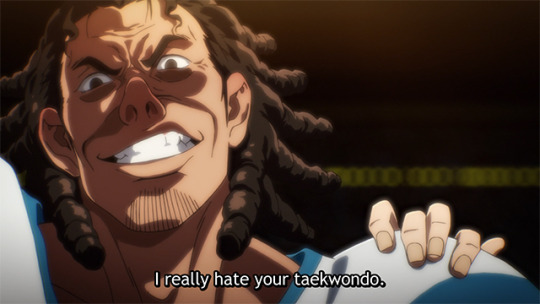
The schism in Taekwondo (or Taekwon-Do, in ITF’s usage) is perhaps even more interesting in the sense that one did not immediately replace the other; instead of the WT supplanting the ITF, the two schools of Taekwondo went about their own paths. Yet, Kukkiwon managed to obtain a significant victory over Choi and ITF Taekwondo: inclusion in the Olympics. In 1982, Kukkiwon was able to arrange a demonstration of Taekwondo for the IOC in 1988 and became an official event during the Asian Games in 1986. In 1994, Kukkiwon “won” the competition for Taekwondo legitimacy by being selected by the IOC as an official sport of the Olympics, joining Judo as the only other Asian martial art in the Olympic games, and debuting in the 2000 games in Australia.
Choi, however, had won in another way: his ITF Taekwondo spread across the world, and his somewhat ingenious method of sending Taekwondo “acolytes” to various places to form their own schools helped make Taekwondo popular and profitable. There are other forms of Taekwondo out there, including ATA (American Taekwondo Association), Jhoon Rhee Style, and the GTF (Global Taekwondo Federation), a split from ITF. Chuck Norris, during the height of his popularity in the '90s, even formed his own school that blended Tang Soo Do and Taekwondo called Chun Kuk Do!

While Choi was successful in spreading Taekwondo around the globe, and South Korea was able to claim “ownership” of the sport through political engineering and historical revision, Taekwondo in the United States would owe much of its growth and popularity to a different individual: Jhoon Rhee. Rhee, learning Taekwondo at the Chung Do Kwan in his childhood, came to America in the '60s to study engineering. Needing some extra money, Rhee began teaching Taekwondo, and through luck and hard work, launched the popularity of the martial art in the United States via television and Hollywood. Like all good and weird success stories, Rhee gained fame from his “viral” '70s commercial jingle, written by Nils Lofgren, guitarist for Bruce Springsteen’s E Street Band!
Rhee’s unconventional approach to success worked, taking his Taekwondo to both of America’s hearts: Hollywood and Washington DC. Rhee would go on to teach and demonstrate Taekwondo to various celebrities including Chuck Norris and Bruce Lee — even writing a book, Bruce Lee and I, in 2011. He also met with President Reagan and famously demonstrated Taekwondo to the United States Congress in 1965. There was even a sparring match between Republicans and Democrats!

But what do all of these different types of Taekwondo actually mean? When I was practicing, did I learn “the wrong” type? Well, the answer is… no! The major difference in schools seems to come down to forms, ranks, and some other small administrative differences — such as who can spar, and why, or what types of focus there is in learning Taekwondo in general. Perhaps due to the odd nature of Taekwondo’s spread outside of Korea, the sport is also highly “commercial;” the ATA and Jhoon Rhee schools, for example, were founded on the idea of both teaching the sport and also establishing chain schools that would funnel profits back to the original founders, essentially creating a business instead of the somewhat monastic idea of a martial art like the Kung-Fu or Karate that appear in movies and media.
As noted by Doug Cook, the forms, of Poomsae, are constantly changing, due in part to the various types and hybrids of Taekwondo, but also due to the somewhat infant nature of the sport compared to other forms. It would be hard, as many authors point out, to find a “true” strain of Taekwondo these days. Instead, the various approaches, forms, and inherent teachings all help create different, unique ideas of the original created by Choi in the '50s — itself a hybrid of various types of martial arts.

It's fairly common in martial arts stories to hear epic tales of the history and longevity of a martial art, but Taekwondo provides us with the unique and interesting experience of seeing that historical mythology evolve in real time. From the controversial Choi to the roots of the Korean search for identity following Japanese occupation and later civil war, Taekwondo serves as a mirror for Korea’s own evolution. While Taekwondo may not be an “ancient” form of martial arts, it is a uniquely Korean one, and one that has a complex history and personality, and thanks to The God of High School, I found myself falling into the rabbit hole of its story. “Reclamation” Taekwondo may not actually exist, but in many ways, Taekwondo was a form of reclamation for Korea: an attempt to create something new and unique in the face of years of brutal occupational rule and civil strife.
Did you know about the history of Taekwondo? What's your favorite style to practice? Let us know, and while you're at it, tell us your current fave WEBTOON series in the comments!
➡️ Watch The God of High School today! ⬅️

Nicole is a frequent wordsmith for Crunchyroll. Known for punching dudes in Yakuza games on her Twitch channel while professing her love for Majima. She also has a blog, Figuratively Speaking. Follow her on Twitter: @ellyberries. Here's that serotonin you ordered.
Do you love writing? Do you love anime? If you have an idea for a features story, pitch it to Crunchyroll Features!
5 notes
·
View notes
Link

#cintura rosa#Unitam Campania#Unione taekwondo e arti marziali#song moo kwan#ilgazeborosaonlus#educazione sport#difesa personale#difesapersonale#dirittialledonne#donna#stop violence#noviolenzasulledonne#nobullying#contrasto al bullismo#nobullismo#scuola
0 notes
Text
Adrian Lester
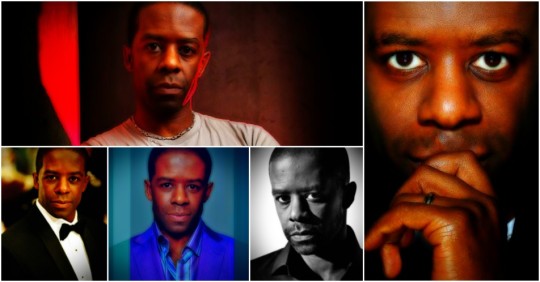
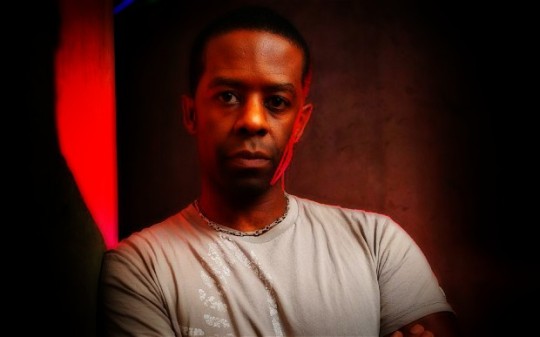
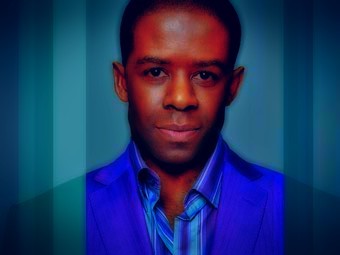
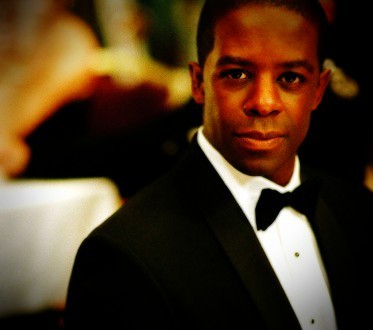
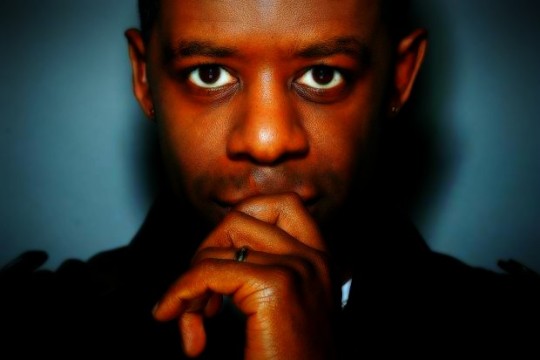
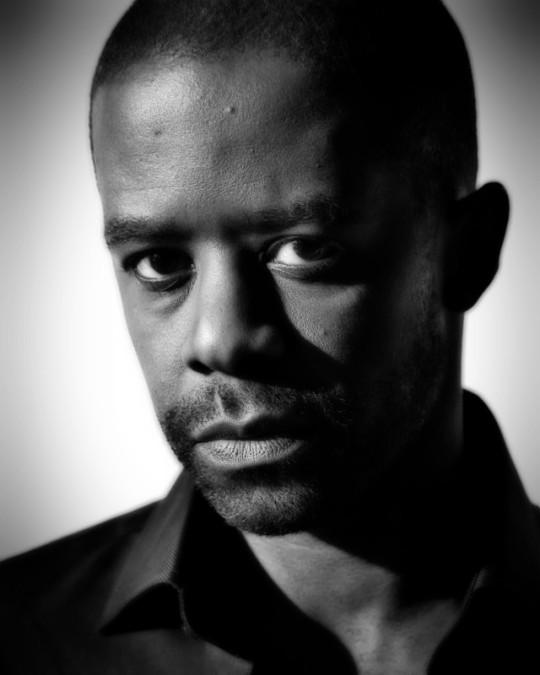
Adrian Anthony Lester, OBE (born 14 August 1968) is an English actor, director, and writer.
Early life and education
Lester was born in Birmingham, West Midlands, the son of Jamaican immigrants Monica, a medical secretary, and Reginald, a manager for a contract cleaning company. From the age of 9 Lester sang as a boy treble in the choir of St. Chad's Cathedral, Birmingham. At 14 he began acting with the Birmingham Youth Theatre. After leaving Archbishop Masterson RC School he attended Joseph Chamberlain VI Form College for one year before completing 3 years training at the Royal Academy of Dramatic Art in London.
Career
Theatre
Lester received an Ian Charleson Award commendation and a Time Out Award for his 1991 performance as Rosalind in Cheek by Jowl's all-male production of As You Like It. In 1993, he played Anthony Hope in the National Theatre's production of Sweeney Todd: The Demon Barber of Fleet Street. He has also appeared on stage in the musical Company, for which he won an Olivier Award, and in the title role of Hamlet (Carlton TV Theatre Award).
In 2003, Lester played the title role in Henry V at the National Theatre.
In 2010, he played the part of Brick in Tennessee Williams' play Cat on a Hot Tin Roof at the Novello Theatre in London.
In 2012 Lester appeared as Ira Aldridge in the play Red Velvet, written by his wife Lolita Chakrabarti.
Lester played the part of Othello in the Shakespeare play of the same name in 2013 alongside Rory Kinnear as Iago at the National Theatre. Both actors won the Best Actor award in the Evening Standard Theatre Awards for their roles; the award is traditionally given to only one actor, but the judges were unable to choose between the pair.
Television
Lester is known for playing a big-time con artist named Michael "Mickey Bricks" Stone in the BBC TV series Hustle between 2004 and 2012. The character was written out of the fourth series and replaced by Ashley Walters, although he returned from the fifth series (2009) onwards.
On American TV, Lester appeared in the hit sitcom Girlfriends from 2002 to 2003, as Ellis, a film star who dated Tracee Ellis Ross's character, Joan.
In late 2005, Lester had a major guest starring role in Channel 4's hard-hitting police drama The Ghost Squad.
In 2008, Lester starred in the BBC drama Bonekickers, a programme focusing on a team of archaeologists.
He also played the character Myror in the British television drama Merlin.
Film
Lester played campaign manager Henry Burton in Mike Nichols's 1998 film Primary Colors, based on the novel by Anonymous (Joe Klein). His character is believed to represent George Stephanopoulos. This part earned him a Chicago Film Critics Association award nomination for "Most Promising Actor".
Lester appeared in Kenneth Branagh's Love's Labour's Lost, an adaptation of the William Shakespeare play, set in the 1930s. The film itself was poorly received, but Lester received a British Independent Film Awards nomination for his performance.
In The Day After Tomorrow, Lester had a minor role as Simon, one of the three researchers who drink a toast of "twelve-year-old Scotch" shortly before freezing to death.
Lester filmed scenes for 2007's Spider-Man 3, as a research scientist who is sought after by the Sandman (Thomas Haden Church) to find a cure for his ailing daughter. He was seen in one teaser trailer for the film; however, his scenes were cut from the final theatrical version.
Other work
In 2010 Lester appeared in the documentary When Romeo Met Juliet together with his wife Lolita Chakrabarti as acting mentors to the pupils of two Coventry schools involved in a production of Romeo and Juliet.
Lester recorded Alpha Force: Survival, an audio book written by Chris Ryan.
Personal life
Lester is married to actress Lolita Chakrabarti. They live in South East London with their two daughters, Lila and Jasmine.
In 2007, Lester took part in Empire's Children, a Channel 4 documentary exploring the journey taken by the "Windrush Generation" to the United Kingdom. Lester's grandfather, Kenneth Nathaniel Lester, was to be included in the documentary, but was unwell during filming in Jamaica and could not be interviewed. Kenneth Lester died soon after the documentary completed filming and never saw the programme aired.
In April 2013, he appeared on the Cultural Exchange feature of Front Row on Radio Four, a feature of the programme where people had to choose a piece of art that meant a great deal to them. He chose Redemption Song by Bob Marley.
Lester holds a 2nd Degree Black Belt in Moo Duk Kwan Taekwondo.
Honours
Lester was appointed Officer of the Order of the British Empire (OBE) in the 2013 New Year Honours for services to drama.
In July 2013 he received an honorary degree from the University of Warwick.
http://wikipedia.thetimetube.com/?q=Adrian+Lester&lang=en
9 notes
·
View notes
Text
History of Taekwondo The Martial Art & Olympic Sport

Taekwondo training generally includes a system of blocks, kicks, punches, and open-handed strikes and may also include various take-downs or sweeps, throws, and joint locks. Some taekwondo instructors will incorporate the use of pressure points, known as jiapsul, as well as grappling self-defence techniques selected from other martial arts, such as hapkido and judo. Taekwondo History The name Taekwondo is derived from the Korean word "Tae" meaning foot, "Kwon" meaning fist and "Do" meaning way of. So, literally Taekwondo means "the way of the foot and fist". The name Taekwondo, however, has only been used since 1955 while the arts' roots began 2,300 years ago in Korea. Known as a martial art and a way of life. The Three Ancient Korean Kingdoms: During the 6th century A.D. what we now call the Korean peninsula was divided into three kingdoms; Koguryo, Paekje and Silla. Silla was the smallest of the kingdoms and located on the south eastern tip of the Korean peninsula. Archaeological findings during these times such as the mural paintings on the royal tombs during the Koguryo period, stone sculptures at pagodas during the Silla period and documents written in the Paekje period, show techniques and fighting stances that were probably the first forms of Taekwondo. The three kingdoms were at war with each other and constantly fought for new ground on the peninsula. Silla, being the smallest and weakest militarily began to have challenging times protecting itself against the other kingdoms and so took an action which would turn out to be a key point in Korean history. Koryo Dynasty: (918 A.D. to 1392) The Koryo Dynasty was a time for growth and development in the martial arts. During this time unarmed combat gained its greatest popularity. It was believed that Soo Bak was introduced to China and became known there as Kwon Pup. Soo Bak also changed its name to Soo Bak Gi because of the new techniques and the mental discipline added to the style. Soo Bak Gi became a popular sport by both the military and the public. Martial arts were on an upswing and even new styles began to appear. One such style was Tae Keyon. Tae Keyon involved many more and new kicking techniques and was designed as more of a fighting sport than a discipline. Tae Keyon and Soo Bak Gi contests were held at annual festivals given by the king. The winners of this contest were given high court offices and also taught the styles to the military, which now made these unarmed arts mandatory. Since the soldiers learned and practiced these arts, during their travels though out the kingdom they also spread the study of martial arts. Japanese Invasion: Japan had great influence in Korea (Choson) many things were changed. All competitive sports and martial arts were outlawed. Only the military, under Japanese control, could practice martial arts. Soo Bak Gi was practiced in secret and soon changed its name again to Soo Bak Do. Japanese combat arts Karate etc were introduced to Korea at this time. The people of Korea received them with great interest. Due to peace treaties between the Japanese and Koreans, Japanese educational curricula were taught in all Korean schools and also such Japanese arts as Kendo ("way of the sword"), Judo, Karate, and Aikido. Once again martial arts began to flourish with each side, Japan and Korea, trading techniques and styles of martial arts. On August 15, 1945 Korea was liberated from Japan and Korean arts could once again develop. Unifying of Taekwondo: Within Korea there were five major martial art academies or Kwans. They were called Moo duk Kwan, Jido Kwan, Chang mu Kwan, Chung do Kwan, and Song mu Kwan. Within these schools lie a variety of styles such as Kong Soo Do, Tae Kyon, Soo Bak Do, Tang Soo Do, Kwon Pup, etc. The way of teaching and employing many of the techniques varied as much as the schools and in 1946 an attempt was made to unify Dojangs (training halls) and standardize instructional methods. Some of the leaders wanted to uphold the martial art character of the schools while others wished to create a combat sport. These meetings met with no success. In April 1955 a new name was from a group of names by the board, it was Taekwondo. In 1962 the Korean Amateur Sports Association recognized the Korean Taekwondo Union, which later became known as the Korean Taekwondo Association (K.T.A.). On May 28, 1973 the World Taekwondo Federation was officially established at the Kukkiwon (headquarters) by Dr. Un Yon Kim. Located in Seoul, Korea the World Taekwondo Federation is the governing body which preserves Taekwondo's roots and development, controls testing and promotes the study of Taekwondo all over the world. The International Olympic Committee (IOC) recognized and admitted the World Taekwondo Federation in July 1980. In 1982 the General Session of the IOC designated Taekwondo as an official Demonstration Sport for the 1988 Olympic Games in Seoul, Korea. In the 2000 Sydney Olympics Taekwondo became an official Olympic Sport. Lauren Burns from Australia won the first official Olympic Gold Medal in Taekwondo. Over 30 million people practice Taekwondo in more than 205 countries. The five taekwondo tenets that Pinnacle abides by are:Courtesy (Ye Ui) Taekwondo students should attempt to be polite to one another and to respect others. Students should address instructors as Sir and to bow to the instructors before and after classes. Turning up early or on time for classes is also an aspect of courtesy. Integrity (Yom Chi) One who has integrity is able to define what is right or wrong and have the conscience, if wrong, to feel guilt. Taekwondo students should strive to be honest and to live by moral principles. Perseverance (In Nae) Perseverance means having patience. One of the most important secrets of becoming a leader in Martial Art of Taekwondo is to overcome every difficulty by perseverance. “One who is impatient in trivial matters can seldom achieve success in matters of great importance.” – Confucius Self-Control (GukGi) Without self-control, a Taekwondo student is just like any fighter in the street. Loss of self-control is disastrous both in sparring and personal affairs. “The term of stronger is the person who wins over oneself rather than someone else” – Lao Tzu. Indomitable Spirit (BaekjulBoolgool) A true student of taekwondo will never give up, not even when faced with insurmountable odds. The most difficult goals can be achieved with indomitable spirit. Pinnacle Martial Arts Taekwondo Academy in Sydney is the ideal place to learn Taekwondo and progress to your own Pinnacle. We are here to Teach, Motivate and Inspire. Marrickville Branch: 23 Yabsley Ave, Marrickville Chester Hill Branch: 12 Banool St, Chester Hill Look at More Reasons why to choose Pinnacle Pinnacle Martial Arts Taekwondo Academy in Sydney is the ideal place to learn and progress to your own Pinnacle. Pinnacle Taekwondo are here to Teach, Motivate and Inspire. Our Students travel to Pinnacle Martial Arts Taekwondo Academy Chester Hill from Villawood Potts Hill, Bass Hill, Fairfield East, South Granville, Granville, Guildford, Guildford East, Sefton, Birrong Berala, Regents Park, Georges Hall, Yagoona, Bankstown Area. Pinnacle Martial Arts Taekwondo HQ in Marrickville Near : Earlwood, Hurlstone Park, Canterbury, Ashbury, Ashfield, Summer Hill, Stanmore, Enmore, Lewisham, Petersham, Newtown, St Peters, Sydenham and Tempe to experience the finest in Taekwondo, Martial Arts & Self Defence training for kids, teens, Adults males and females of all levels. INTERESTED IN OUR CLASS ?Book My Free Class! Read the full article
0 notes
Text

Modern-day Taekwondo is influenced by many other
Martial Arts. The most important of these arts is Japanese
Karate. This is because Japan dominated Korea during
1910 until the end of World War II. During WWII, lots of
Korean soldiers were trained in Japan. During this occupation of Korea, the Japanese
tried to erase all traces of the Korean culture, including the martial arts. The influence
that Japan has given to Taekwondo are the quick, lineair movements, that characterize
the various Japanese systems.
After World War II, when Korea became independant, several kwans arose. These kwans
were:
• Chung Do Kwan
• Moo Duk Kwan
• Yun Moo Kwan
• Chang Moo Kwan
• Oh Do Kwan
• Ji Do Kwan
• Chi Do Kwan
• Song Moo Kwan
The Kwans united in 1955 as Tae Soo Do. In the
beginning of 1957, the name Taekwondo was adopted
by several Korean martial arts masters, for its
similarity to the name Tae Kyon.
General Choi Hong-hi required the army to train
Taekwondo, so the very first Taekwondo students
were Korean soldiers. The police and air force had to
learn Taekwondo as well. At that time, Taekwondo
was merely a Korean version of Shotokan Karate. In
1961 the Korean Taekwondo Union arose from the Soo Bakh Do Association and the Tae
Soo Do Association. In 1962 the Korean Amateur Sports Association acknowledged the
Korean Taekwondo Union and in 1965 the name was changed to Korean Taekwondo
Association (K.T.A.). General Choi was president of the K.T.A. at that time and was
asked to start the I.T.F. as the international branch of the K.T.A. The southern government
was overthrown in 1961. General Choi Hong-hi left for America and established I.T.F.
(International Taekwondo Federation) Taekwondo, as a separate entity, two years later.
Demonstrations were given all over the world. It took a while before real progress was
made, but eventually, in 1973, the World Taekwondo Federation (W.T.F.) was founded. In
1980, W.T.F. Taekwondo was recognized by the International Olympic Committee (I.O.C.) and became a demonstration sport at the Olympics in 1988. In the year 2000
taekwondo made its debute as an official olympic sport. There were several attempts to
unify I.T.F. and W.T.F. Taekwondo, but unfortunately, these failed.
Follow us on Instagram, Twitter, Tumblr, LinkedIn and Medium @masterimoo or as Imo Joseph
#masterimoo #worldtaekwondo
0 notes
Photo

HISTORIC DOCUMENT! - Induction certificate of the late GM Byung Jik Ro the founder of Song Moo Kwan who was inducted into the OFFICIAL TAEKWONDO HALL OF FAME ® 태권도 명예의 전당 on April 10, 2009. This was the first time that GM Byung Jik Ro and the other Kwan founders were honored by an international organization. https://www.instagram.com/p/CGNDyUyBBOg/?igshid=ygw9ezpz1d89
0 notes
Text
Park Tae-seon – another Korean Pikareum Messiah
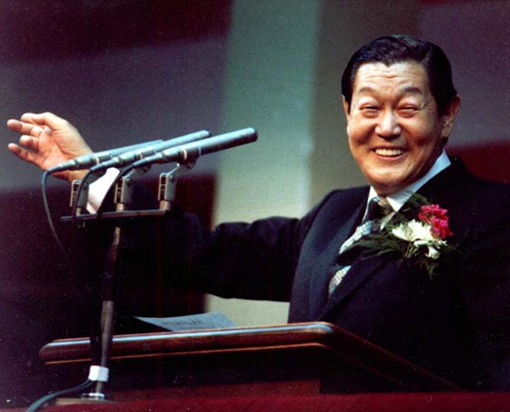
Elder Park Tae-seon preaching in 1956
Is anything in this story familiar concerning another Korean messiah?
Park was born in a poor peasant family in 1915. After finishing his elementary education, he went to Japan and graduated from a vocational school there. Later, in Korea, he set up his Evangelism Center. At the peak of his ‘ministry’ Elder Park had over a million followers. There were whole communities of followers with factories making clothing, etc. Early on Park was ahead of Moon in the race between the different Korean messiahs. Park’s religion was also known as 'The Olive Tree Movement’. Now there are not so many of his churches remaining in Korea. There were never many followers outside Korea. Today the official name is 'Chunbukyo’ ( 천부교 ) Chun means Heaven, Bu means Father, and Kyo means Church, so it is The Church of Heavenly Father.
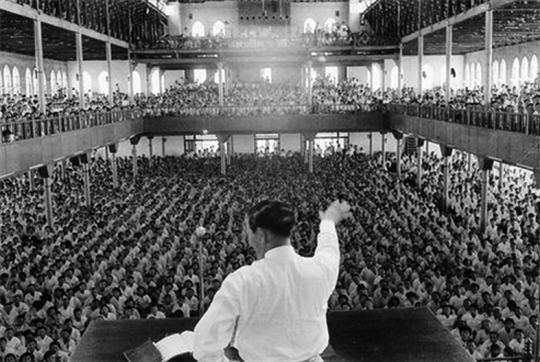
In 1955 Park was involved in a big revival meeting, which proved to be a turning point in his career.
In Soo Kim: “Crowds of people came from all parts of the country and there were many with different kinds of diseases seeking healing. Dr. Swanson led Bible exposition sessions in the mornings and evenings, and Park clapped and sang praise songs at dawns and in the afternoons to lead in healing and spiritual ministry. During the remaining sessions, Park collected gold rings, watches, cash and other items from the people by saying that he will build a prayer house for national salvation. Rev. Kim Seon Hwan testifies that Park Tae Seon embezzled all the money collected during the meetings. … The most crucial of the unbiblical doctrines Park taught was the so-called “blood separation” doctrine. Claiming that he “received the precious blood of Jesus, the blood became his, and he was distributing the blood to others,” he taught: “Archangel Michael, fallen as the serpent, committed adultery with Eve and because of that serpent’s blood, and all Eve’s children including Cain carried the original sin. Therefore one can sanctify one’s blood by having intercourse with Park because his body is blessed and sanctified. And the one with separated blood can sanctify others by having intercourse with them. This doctrine of orgies was used to forge mental and spiritual unity among his followers.” Moreover, he called himself “the righteous one of the east and the Olive Tree of the East” mentioned in Isaiah 41. He claimed that he was sent by God from the North (from his hometown in Youngbyon, North Pyengan Province) to save Korea.”
In March 1956 Park was dismissed as an Elder. The General Assembly of the Presbyterian Church in 1956 classified his movement as a cult.
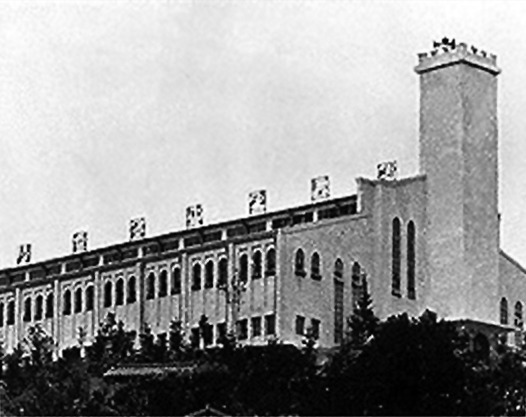
Elder Park Tae-seon’s church
From another source: “ 'the only way to enter the Heaven, believing in the God is no other than for the male and the female to be united into the one body.’ This prophecy itself contradicts the social ethics … let the married couples divorce and conducted the special services of putting hands on the faithful women. He has fulfilled what was foretold. … that the women should receive the grace of the blood exchange ceremony with the righteous man who gives the hands of the help for the salvation. … The Elder, Park Tae-seon had made the thunderbolt-like declaration in the early 1980s, that he is the only God throughout the entire realm of the Heaven, who created the whole universe and the mankind. In addition, he had precisely taught the reasons why the human being was created and why the God of omniscience and omnipotence had come down to this earth for himself incarnated and endured the prison twice and the prospect how the human will become in the future.”
(www.paikmagongja.org/english/parkteaeseon/park-001.htm)
Kirsti L. Nevalainen’s book is very helpful in shedding more light on Elder Park.
Change of Blood Lineage through Ritual Sex in the Unification Church ISBN 978-1439261538 See pages 86-88
“Rev. Moon’s immediate disciple Ms. Chong Deuk-eun with whom Rev. Moon had a yongch’e ceremony in June 1946 in Pyongyang got a revelation from God and left for South Korea at the beginning of 1947. She was told by God that she must be disconnected from Sun Myung Moon. She occasionally attended Kim Paek-moon’s meetings in Seoul. Stationed at Mt. Samgak, north of Seoul, she successfully convinced quite a few people of her religious mission. Among those who converted to her was Park Tae-seon who was then a deacon at Namdaemun Presbyterian church in Seoul. Deacon Park and his wife were especially faithful to her. In February 1949 she was invited to stay in Deacon Park’s house in Susaek near Seoul and stayed there for about a month. At this place a few young men and women were having a yongch’e or pikareum ceremonies with her. Later Park Tae-seon founded his own messianic group called the Olive Tree Movement. Park Tae-seon considered himself as the Messiah. He claimed that he “has been granted the precious blood of Jesus, which has been wholly permeated in his body which has to be distributed to others.” He practiced thus a blood exchange ritual. He identified his mission with that of Christ by insisting that he was the only one who could distribute the precious blood further. Park Tae-seon’s group had installed separate rooms in the basement of the churches in which men and women had sexual intercourse. These rites drew a large number of people to the movement.”
In Soo Kim: “Some time later, Park created self-contained villages at Sosa, Deokso and other places in Gyeonggi Province as a means to building the so-called 1000-year city. He lured many innocent Christians by preaching that 144,000 people will become a holy nation and go up to heaven according to Revelation. Those who believed him liquidated their possessions and cut off their family relations to live in the villages, only to be exploited in harsh labor for producing factory products. These products were then put on compulsory sale at the Evangelism Center for achieving commercial gains. The sect went through a series of internal conflicts and disputes. Park eventually created Cheonbugyo (Religion of Heavenly Father) and presented himself as a God. But his death brought about natural dismissal of the sect and so we see another example of cults in their typical cycle.
Park Tae-seon and his Evangelism Center movement were just like any cultic organization we can see in unstable society after a war. … Another important factor is that existing Christian leaders were unable to fully satisfy the spiritual cravings of Christians at the most crucial time.”
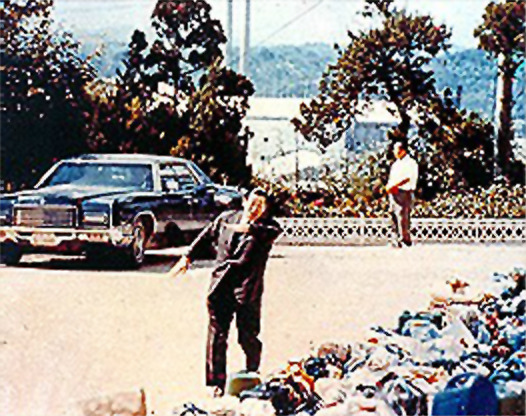
Park Tae-seon with a Cadillac
Following in the footsteps of Park, Moon is claiming to be God:
Rev Jin Hun Yong (He heads the UC Department for Education and Witnessing in Korea, and travels the world teaching UC members.)
Here is the content of a slide from one of Yong’s lectures:
"1. 1014 True Parents Cosmic Level Blessing (October 14, 2009).
2. Korea is God’s fatherland and hometown.
3. Jung-Joo is the hometown where God was born.
4. Jung-Joo is the hometown of the first, second and third Israel.
5. Korean is the mother language of God.”
Jung-Joo (or Jeongju) just so happens to be where Moon was born…
In 1948 Moon was excommunicated from the Presbyterian Church. (Jane Day Mook article published in 'A.D.’ New Growth on Burnt-Over Ground - May 1974 page 34, and others, state that Moon was excommunicated at around the time he was arrested and sent to Heungnam prison.)
Moon and Park both had yongch’e or pikareum sex rituals with Chong Deuk-eun. (She is also known as Chong Tuk-un.) Rev Jin Hun Yong lists her as one of Moon’s leading disciples in Pyongyang in 1946.
Sources:
Photos of Elder Park’s religion: http://www.chunbukyo.or.kr/.
The In Soo Kim PhD (2011) quotes are taken from his book, History of Christianity in Korea ISBN 978-89-6562-134-8
Transactions of the Royal Asiatic Society No. 43 (1967) has a series of articles on Korean religions
(http://www.raskb.com/transactions/VOL43/Vol043.docx)
PDF file: (http://www.raskb.com/transactions/VOL43/KORS0749D_VOL43.pdf)
Spencer J. Palmer: The New Religions of Korea: Introduction. Transactions XLIII:1-10.
Lee Kang-o: Chungsan’gyo: Its History, Doctrines and Ritual Practices. Translated by Richard Rutt. Transactions XLIII:28-66.
Choi Jai-sok: A Socio-religious Study of Sindonae. Transactions XLIII:67-91.
Benjamin Weems: Ch’ŏndogyo Enters Its Second Century. Transactions XLIII: 92-100.
Choi Syn-duk: Korea’s Tong-il Movement (Unification Church). Transactions XLIII:101-113.
In the 1950s and early 1960s Tae-seon Park was a much more successful pikareum messiah than Moon, who was jealous of him.
Felix Moos: Leadership and Organization in the Olive Tree Movement. Transactions XLIII:11-27. “In September 1958, police reported that the number of residents in Elder Park’s Olive Tree Movement believers’ town was 7,467. Outside of the town, there were tens of thousands of members, economically supporting (and being supported by) the town through nationwide sales of goods that were produced in the town.”
[At the same time Moon had about 200 followers in Seoul, and a few in Pusan and Taegu, and maybe one other place.] “Heretical or not, [Elder Park’s Olive Tree] movement by 1964 had from 1,800,000 to 2,000,000 followers in some 303 congregations (Chondo Kwan), against some 97,306 Presbyterians after more than half a century of intense missionary efforts. This perhaps suggests that Park Tae-seon himself is, in his own way, a more reliable interpreter in Korea of the Protestant “ethic” than the Western Presbyterian missionaries have been.” Professor Felix Moos (Professor Emeritus, Socio-Cultural Anthropology, (Ph.D., Washington 1963) Research Areas: Applied anthropology and ethnology, culture change and development, comparative value systems, ethnic conflict; East and Southeast Asia, Pacific.)
A supposed message from Spirit World about Elder Tae-seon Park
Young-whi Kim said another Pikareum Messiah, Tae-seon Park, did “Wonderful Works”
Newsweek Article on “Many Moons” about the many Korean messiahs
Both these Korean messiahs practised pikareum:
Chong Deuk-eun Moon met her in Pyongyang in 1946, and had a pikareum ceremony with her. (They may have met in Seoul the previous year.) She and Moon worked together until February 1947 when Chong had a revelation that she should separate from him; she then she moved to near Seoul. Moon took about 17 ideas for his Divine Principle from her theology – which was dictated to a follower in 1947. Her book, The Principle of Life, was based on those notes. It was published in 1958, just after her death.
Kim Baek-moon He developed the Parallels of History, taking ideas from Paek Nam-ju. Moon studied with Kim Baek-moon for six months in 1945-1946.
2 notes
·
View notes
Text
Song Moo Kwan Pan Song Ryu classes moved!
Song Moo Kwan Pan Song Ryu (Korean Karate) classes have moved to the Fridley Community Center beginning Tuesday July 11th, 2023! Class schedule will remain the same! Tuesday and Thursday at 6:00pm Class will be held in the Community Center gym.

View On WordPress
0 notes
Photo

Kukkiwon (국기원; 國技院), also known as World Taekwondo Headquarters, and home of the World Taekwondo Academy, is the official taekwondo governing organisation established by the South Korean government. It is supervised by the International Sports Division of the Ministry of Culture, Sports, and Tourism.
var quads_screen_width = document.body.clientWidth; if ( quads_screen_width >= 1140 ) { /* desktop monitors */ document.write('<ins class="adsbygoogle" style="display:inline-block;width:300px;height:250px;" data-ad-client="pub-9117077712236756" data-ad-slot="1897774225" >'); (adsbygoogle = window.adsbygoogle || []).push({}); }if ( quads_screen_width >= 1024 && quads_screen_width < 1140 ) { /* tablet landscape */ document.write('<ins class="adsbygoogle" style="display:inline-block;width:300px;height:250px;" data-ad-client="pub-9117077712236756" data-ad-slot="1897774225" >'); (adsbygoogle = window.adsbygoogle || []).push({}); }if ( quads_screen_width >= 768 && quads_screen_width < 1024 ) { /* tablet portrait */ document.write('<ins class="adsbygoogle" style="display:inline-block;width:300px;height:250px;" data-ad-client="pub-9117077712236756" data-ad-slot="1897774225" >'); (adsbygoogle = window.adsbygoogle || []).push({}); }if ( quads_screen_width < 768 ) { /* phone */ document.write('<ins class="adsbygoogle" style="display:inline-block;width:300px;height:250px;" data-ad-client="pub-9117077712236756" data-ad-slot="1897774225" >'); (adsbygoogle = window.adsbygoogle || []).push({}); }
Kukkiwon is based at 635 Yeoksam-dong (역삼동) in the Gangnam-gu (강남구) district of Seoul, South Korea. Construction of the main building commenced on 19 November 1971, and was completed on 30 November 1972, with the organization being officially named on 6 February 1973.[6] The main building accommodates up to 3,000 people for events. Standing at three stories in height, the building’s roof features kiwa (blue Korean tiles)—the same type of roofing as the Blue House (the official residence of the President of South Korea).
In May 1973, the Korea Taekwondo Association and Kukkiwon hosted the first World Taekwondo Championships, with 200 taekwondo competitors from 17 countries in attendance.[8][9] Kukkiwon has had a permanent taekwondo demonstration team since September 1974.
Un Yong Kim was the first President of Kukkiwon, and resigned from the position on 15 November 2001. Woon Kyu Uhm of the Chung Do Kwan was elected President on 2 March 2004.The President in late 2005 was Yong Gye Um. On 10 December 2009, Seung Wan Lee of the Jidokwan was elected as Kukkiwon’s next President.
In mid-2010, Won Sik Kang became the president; he was also the current president of Song Moo Kwan, Korea. President Kang stepped down at the end of his term of office in early 2013. After him the interim president while awaiting an election was Grandmaster Kyu Sok Lee, who also serves as Secretary General for the Asian Taekwondo Union. Kim Chung Gun later acted as the Chair-in-Office. The next president was Grandmaster Lee Kyu Hyung (9th dan) after being provisionally named by the Director of the organization’s board as of August 20, 2013; he resigned after a short period, claiming he was unable to perform the role to the best of his abilities due to political issues.
The current president is Grandmaster OH Hyun Deuk, which was elected on 3rd of june, 2016.
Kukkiwon was founded as a Central Dojang of a traditional Korean martial art in 1972. It paved the way to globalization by holding the 1st World Taewondo Championships and establishing the World Taekwondo Federation(WTF) in 1973. Since then, Taekwondo has expanded with significant demonstrations of performance aspects. Kukkiwon have set up the Poom-Dan Promotion Test System to issue Poom-Dan certificate. It has been preparing the ground for development of Taekwondo by educating a leader who will lead Taekwondo in the future and opening a research institution. Also, it has contributed to revitalize and develop Taekwondo as a cultural industry by establishing a Taekwondo Demonstration Team and holding a World Taekwondo Hanmadang. Kukkiwon, as a cradle and holy place, will lead the way not only spread and inherit Taekwondo technique but also spirit to aim world peace that transcends racial, national, and ideology.
Kukkiwon Seoul, South Korea was originally published on HiSoUR Art Collection
0 notes
Photo

Title: Protect the Boss
Episodes: 18
Year/Genre: 2011; Romance and Comedy
Synopsis:
No Eun Seol finally gets a job as a professional secretary at a large conglomerate after struggling with unemployment, only to fall in love with her boss, Cha Ji Heon, the immature youngest son of a chaebol family.
Cast:
Choi Kang Hee as No Eun Seol
Ji Sung as Cha Ji Heon
Kim Jae Joong as Cha Moo Won
Wang Ji Hye as Seo Na Yoon
Lee Hee Won as Yang Ha Young
Park Young Kyu as Chairman Cha
Cha Hwa Yun as Shin Sook Hee
Kim Young Ok as Mrs. Song
Ha Jae Sook as Lee Myung Ran
Jung Kyu Soo as No Bong Man
Kim Hyung Bum as Secretary Kim
Kim Ha Kyoon as Secretary Jang
Kim Chung as Hwang Kwan Jang
Kim Seung Wook as Park Sang Moo
Ahn Nae Sang (cameo)
Oh Hyun Kyung (cameo)
Yoon Gi Won as Na Yoon's blind date partner (ep 17)
Rating/comment: 9/10
0 notes
Text
History of Taekwondo The Martial Art & Olympic Sport

Taekwondo training generally includes a system of blocks, kicks, punches, and open-handed strikes and may also include various take-downs or sweeps, throws, and joint locks. Some taekwondo instructors will incorporate the use of pressure points, known as jiapsul, as well as grappling self-defence techniques selected from other martial arts, such as hapkido and judo. Taekwondo History The name Taekwondo is derived from the Korean word "Tae" meaning foot, "Kwon" meaning fist and "Do" meaning way of. So, literally Taekwondo means "the way of the foot and fist". The name Taekwondo, however, has only been used since 1955 while the arts' roots began 2,300 years ago in Korea. Known as a martial art and a way of life. The Three Ancient Korean Kingdoms: During the 6th century A.D. what we now call the Korean peninsula was divided into three kingdoms; Koguryo, Paekje and Silla. Silla was the smallest of the kingdoms and located on the south eastern tip of the Korean peninsula. Archaeological findings during these times such as the mural paintings on the royal tombs during the Koguryo period, stone sculptures at pagodas during the Silla period and documents written in the Paekje period, show techniques and fighting stances that were probably the first forms of Taekwondo. The three kingdoms were at war with each other and constantly fought for new ground on the peninsula. Silla, being the smallest and weakest militarily began to have challenging times protecting itself against the other kingdoms and so took an action which would turn out to be a key point in Korean history. Koryo Dynasty: (918 A.D. to 1392) The Koryo Dynasty was a time for growth and development in the martial arts. During this time unarmed combat gained its greatest popularity. It was believed that Soo Bak was introduced to China and became known there as Kwon Pup. Soo Bak also changed its name to Soo Bak Gi because of the new techniques and the mental discipline added to the style. Soo Bak Gi became a popular sport by both the military and the public. Martial arts were on an upswing and even new styles began to appear. One such style was Tae Keyon. Tae Keyon involved many more and new kicking techniques and was designed as more of a fighting sport than a discipline. Tae Keyon and Soo Bak Gi contests were held at annual festivals given by the king. The winners of this contest were given high court offices and also taught the styles to the military, which now made these unarmed arts mandatory. Since the soldiers learned and practiced these arts, during their travels though out the kingdom they also spread the study of martial arts. Japanese Invasion: Japan had great influence in Korea (Choson) many things were changed. All competitive sports and martial arts were outlawed. Only the military, under Japanese control, could practice martial arts. Soo Bak Gi was practiced in secret and soon changed its name again to Soo Bak Do. Japanese combat arts Karate etc were introduced to Korea at this time. The people of Korea received them with great interest. Due to peace treaties between the Japanese and Koreans, Japanese educational curricula were taught in all Korean schools and also such Japanese arts as Kendo ("way of the sword"), Judo, Karate, and Aikido. Once again martial arts began to flourish with each side, Japan and Korea, trading techniques and styles of martial arts. On August 15, 1945 Korea was liberated from Japan and Korean arts could once again develop. Unifying of Taekwondo: Within Korea there were five major martial art academies or Kwans. They were called Moo duk Kwan, Jido Kwan, Chang mu Kwan, Chung do Kwan, and Song mu Kwan. Within these schools lie a variety of styles such as Kong Soo Do, Tae Kyon, Soo Bak Do, Tang Soo Do, Kwon Pup, etc. The way of teaching and employing many of the techniques varied as much as the schools and in 1946 an attempt was made to unify Dojangs (training halls) and standardize instructional methods. Some of the leaders wanted to uphold the martial art character of the schools while others wished to create a combat sport. These meetings met with no success. In April 1955 a new name was from a group of names by the board, it was Taekwondo. In 1962 the Korean Amateur Sports Association recognized the Korean Taekwondo Union, which later became known as the Korean Taekwondo Association (K.T.A.). On May 28, 1973 the World Taekwondo Federation was officially established at the Kukkiwon (headquarters) by Dr. Un Yon Kim. Located in Seoul, Korea the World Taekwondo Federation is the governing body which preserves Taekwondo's roots and development, controls testing and promotes the study of Taekwondo all over the world. The International Olympic Committee (IOC) recognized and admitted the World Taekwondo Federation in July 1980. In 1982 the General Session of the IOC designated Taekwondo as an official Demonstration Sport for the 1988 Olympic Games in Seoul, Korea. In the 2000 Sydney Olympics Taekwondo became an official Olympic Sport. Lauren Burns from Australia won the first official Olympic Gold Medal in Taekwondo. Over 30 million people practice Taekwondo in more than 205 countries. The five taekwondo tenets that Pinnacle abides by are:Courtesy (Ye Ui) Taekwondo students should attempt to be polite to one another and to respect others. Students should address instructors as Sir and to bow to the instructors before and after classes. Turning up early or on time for classes is also an aspect of courtesy. Integrity (Yom Chi) One who has integrity is able to define what is right or wrong and have the conscience, if wrong, to feel guilt. Taekwondo students should strive to be honest and to live by moral principles. Perseverance (In Nae) Perseverance means having patience. One of the most important secrets of becoming a leader in Martial Art of Taekwondo is to overcome every difficulty by perseverance. “One who is impatient in trivial matters can seldom achieve success in matters of great importance.” – Confucius Self-Control (GukGi) Without self-control, a Taekwondo student is just like any fighter in the street. Loss of self-control is disastrous both in sparring and personal affairs. “The term of stronger is the person who wins over oneself rather than someone else” – Lao Tzu. Indomitable Spirit (BaekjulBoolgool) A true student of taekwondo will never give up, not even when faced with insurmountable odds. The most difficult goals can be achieved with indomitable spirit. Pinnacle Martial Arts Taekwondo Academy in Sydney is the ideal place to learn Taekwondo and progress to your own Pinnacle. We are here to Teach, Motivate and Inspire. Marrickville Branch: 23 Yabsley Ave, Marrickville Chester Hill Branch: 12 Banool St, Chester Hill Look at More Reasons why to choose Pinnacle Pinnacle Martial Arts Taekwondo Academy in Sydney is the ideal place to learn and progress to your own Pinnacle. Pinnacle Taekwondo are here to Teach, Motivate and Inspire. Our Students travel to Pinnacle Martial Arts Taekwondo Academy Chester Hill from Villawood Potts Hill, Bass Hill, Fairfield East, South Granville, Granville, Guildford, Guildford East, Sefton, Birrong Berala, Regents Park, Georges Hall, Yagoona, Bankstown Area. Pinnacle Martial Arts Taekwondo HQ in Marrickville Near : Earlwood, Hurlstone Park, Canterbury, Ashbury, Ashfield, Summer Hill, Stanmore, Enmore, Lewisham, Petersham, Newtown, St Peters, Sydenham and Tempe to experience the finest in Taekwondo, Martial Arts & Self Defence training for kids, teens, Adults males and females of all levels. INTERESTED IN OUR CLASS ?Book My Free Class! Read the full article
0 notes
Text
2022 Winter - Spring Community Education Classes
2022 Winter – Spring Community Education Classes
Classes start January 18, 2022! Come join us for the fun and work! Martial arts training improves fitness, discipline, focus, and confidence! Learning the helps develop leadership and problem solving to benefit daily life! Haidong Gumdo (Korean Sword) https://fridley.ce.eleyo.com/course/2804/winter-2022/korean-sword-haidong-gumdo Haidong Gumdo is a Korean sword art that is open to ages 12 and…

View On WordPress
0 notes